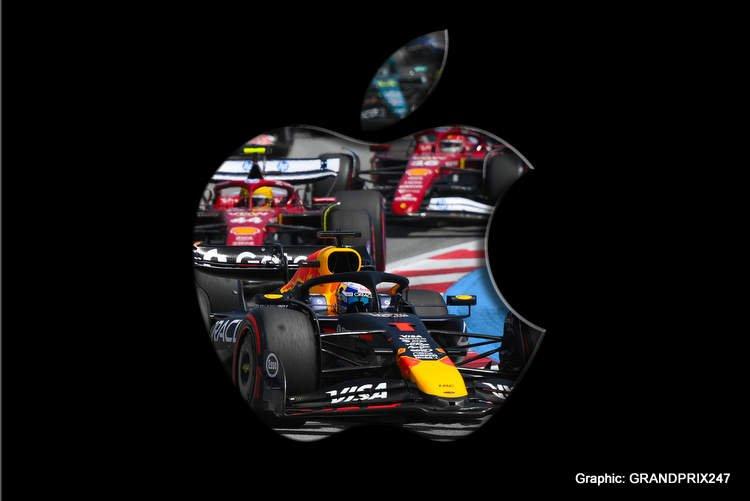Formula 1ŌĆÖs U.S.TV Rights Battle: Streaming Titans and Conventional Broadcasters Clash
Streaming Powerhouses and Legacy Networks Compete for Formula 1ŌĆÖs American Broadcast Rights
The race to secure the U.S. broadcasting rights for Formula 1 has sparked an intense contest among leading streaming services and established sports networks. Netflix, ESPN, and Amazon are all aggressively pursuing the opportunity to become the primary platform for F1 coverage in the United States, a move that could dramatically alter how millions of fans engage with the sport. This fierce rivalry reflects not only Formula 1ŌĆÖs surging popularity in the American market but also the evolving dynamics of sports media consumption.
Each contender brings a distinct approach to the table, aiming to captivate diverse segments of the F1 audience:
- Netflix plans to leverage its expertise in compelling documentary storytelling, offering immersive series and interactive content that deepen fan connection.
- ESPN intends to capitalize on its robust sports broadcasting infrastructure, delivering thorough live race coverage paired with expert analysis.
- Amazon Prime Video aims to utilize its cutting-edge streaming technology and global platform to provide multi-angle viewing options and real-time fan engagement features.
| Contender | Core Strength | Expected Offerings |
|---|---|---|
| Netflix | Innovative storytelling and exclusive content | Original docuseries and interactive fan experiences |
| ESPN | Established live sports broadcasting and analysis | Extensive live coverage with expert commentary |
| Amazon Prime Video | Advanced streaming technology and global reach | Multi-angle streams and integrated fan interaction |
Revolutionizing Fan Interaction and Viewing Through Exclusive Broadcast Rights
Securing exclusive Formula 1 broadcasting rights offers a unique chance to transform how American fans experience the sport. By centralizing coverage on a single platform, broadcasters can introduce innovative technologies such as augmented reality overlays, real-time telemetry, and customizable camera angles, creating a more engaging and personalized race-day experience.These enhancements not only deepen the connection for long-time enthusiasts but also lower barriers for newcomers, making F1 more accessible and exciting.
Beyond race broadcasts, the competition among Netflix, ESPN, and Amazon is expected to drive the development of interactive features that extend fan engagement throughout the season. Potential innovations include live polls, exclusive behind-the-scenes footage, and integrated social media interactions, all designed to convert passive viewers into active participants. This heightened engagement could significantly boost sponsorship appeal and merchandise sales by fostering stronger brand loyalty.
- Interactive race-day tools: Access to live driver data, multiple commentary streams, and dynamic stats.
- Exclusive content: Deep dives into team strategies, driver profiles, and race preparations.
- Community engagement: Integrated forums and live chats to connect fans worldwide.
| Platform | Fan Benefits | Estimated U.S. Reach (millions) |
|---|---|---|
| Netflix | Original docuseries and binge-worthy race highlights | 50+ |
| ESPN | Live broadcasts with interactive stats and expert insights | 40+ |
| Amazon Prime Video | Multi-view options and integrated e-commerce features | 60+ |
WhatŌĆÖs at Stake for ESPN,Netflix,and Amazon in Growing Formula 1ŌĆÖs U.S. Fanbase
The contest for Formula 1ŌĆÖs U.S. broadcast rights represents a strategic opportunity for ESPN, Netflix, and Amazon to tap into one of AmericaŌĆÖs fastest-expanding sports markets. ESPN aims to solidify its position as a premier sports broadcaster by leveraging its extensive live coverage experience and loyal cable audience. Simultaneously occurring,Netflix seeks to innovate by blending traditional race coverage with its acclaimed documentary format,inspired by the success of series like Drive to Survive,to attract younger,digitally native viewers.
AmazonŌĆÖs strategy focuses on embedding F1 content within its vast Prime ecosystem, offering interactive features such as real-time analytics and multiple camera angles to create a highly engaging live experience.The eventual rights holder will not only gain a valuable content asset but also influence the cultural presence of Formula 1 in the U.S. market. HereŌĆÖs a breakdown of each contenderŌĆÖs unique advantages:
- ESPN: Deep-rooted sports broadcasting expertise and a broad cable subscriber base.
- Netflix: Mastery of storytelling through documentaries, appealing to Millennials and Gen Z.
- Amazon Prime Video: Advanced streaming technology with interactive features and global reach.
| Platform | Primary Audience | Distinctive Edge |
|---|---|---|
| ESPN | Traditional sports enthusiasts | High-quality live broadcasts and expert commentary |
| Netflix | Millennials and Generation Z | Engaging documentary storytelling and binge-watching appeal |
| Amazon Prime Video | Tech-savvy, interactive viewers | Personalized streaming and enhanced live interactivity |
Key Strategies for Broadcasters to Foster Growth and Innovation in Formula 1 Coverage
With Formula 1ŌĆÖs popularity surging in the U.S., broadcasters must adopt forward-thinking strategies that blend traditional sports coverage with immersive digital experiences. Utilizing cutting-edge data analytics, augmented reality, and personalized content delivery will be crucial to converting casual viewers into passionate fans. The rivalry among Netflix, ESPN, and Amazon highlights the sportŌĆÖs rising value and the imperative for broadcasters to innovate beyond standard live race telecasts.
Collaborations with F1 teams and technology partners can unlock exclusive content opportunities, such as behind-the-scenes access and in-depth interviews, providing a competitive advantage in storytelling and brand differentiation. The following table outlines essential innovation areas that could drive audience growth:
| Innovation Focus | Expected Benefit | Example Initiatives |
|---|---|---|
| Interactive Storytelling | Boosted viewer engagement | 360-degree race views, fan voting on race elements |
| Personalized Content | Higher audience retention | Driver-centric streams, customized highlight reels |
| Multi-Platform Integration | Expanded demographic reach | Mobile apps with live updates, social media integration |
| Exclusive Access | Enhanced brand loyalty and differentiation | Behind-the-scenes documentaries, exclusive team interviews |
Final Thoughts: The Future of Formula 1 Broadcasting in the U.S.
As the contest for Formula 1ŌĆÖs U.S. broadcast rights intensifies, the sport stands on the brink of a transformative era. Whether NetflixŌĆÖs narrative-driven approach, ESPNŌĆÖs traditional sports expertise, or AmazonŌĆÖs technological innovation prevails, the outcome will significantly influence how American audiences engage with F1. This battle extends beyond the racetrack, reflecting broader shifts in media consumption and the increasing demand for premium live sports content. In the months ahead, all eyes will be on the networks poised to redefine the American Formula 1 experience.




